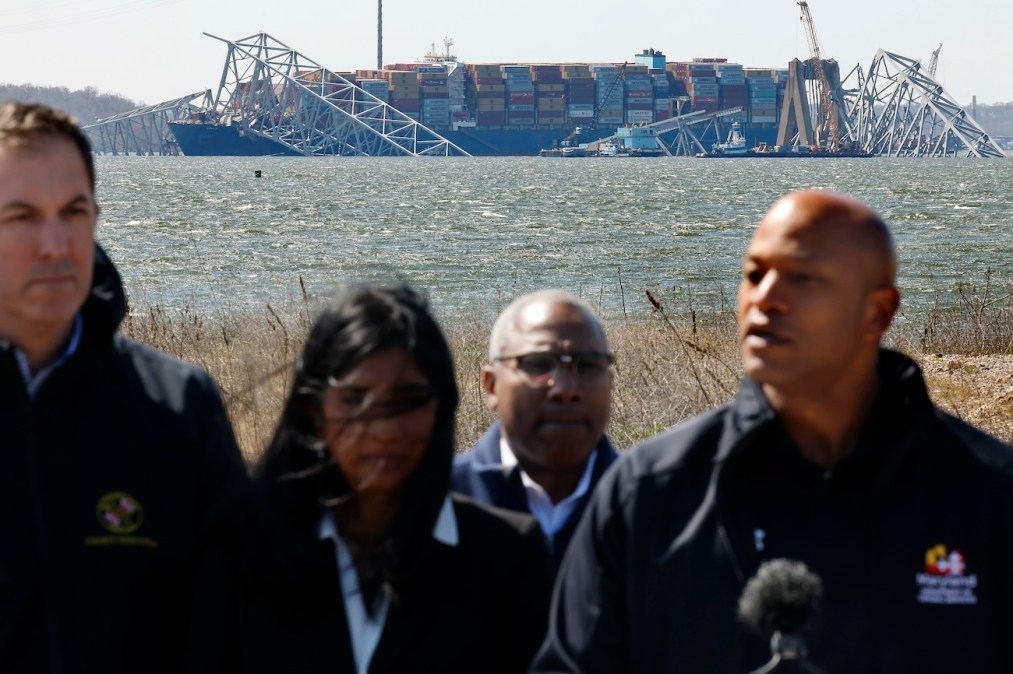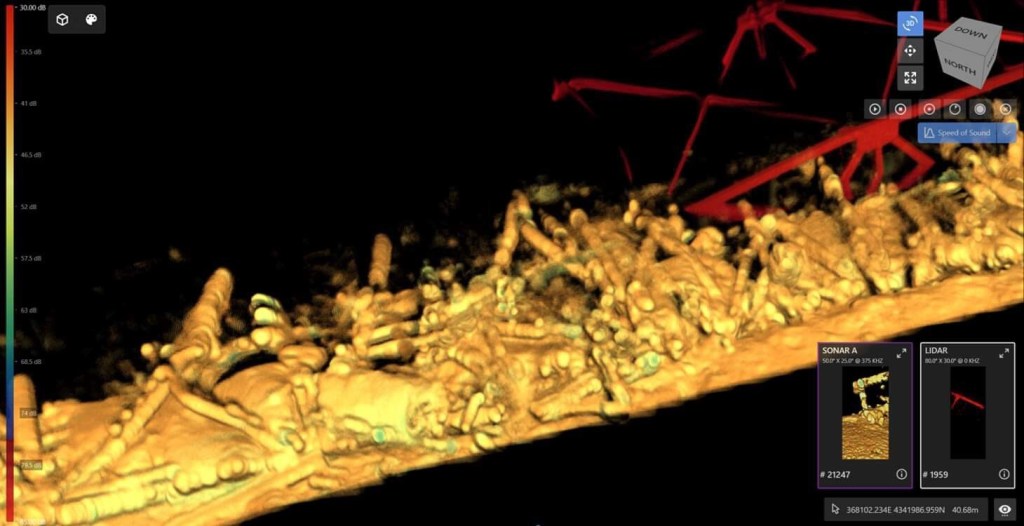Sonar tech key to Baltimore bridge collapse recovery, governor says

Following the deadly collapse of Baltimore’s Francis Scott Key Bridge on March 26, Maryland Gov. Wes Moore said Wednesday that sonar technology was a key part of the recovery efforts as officials work to restore commercial access to the city’s port.
Speaking at a press conference alongside members of his incident response team, Moore said there were challenges to reopening access to the Port of Baltimore following the bridge’s collapse, caused by a container ship crashing into one of the bridge’s supporting columns more than a week ago. The collapse killed six workers who were filling potholes on the bridge the moment the ship struck, and only the bodies of two have been recovered.
Dive crews were deployed to evaluate underwater bridge debris that’s blocking commercial ship channels, but recent rough weather in the Patapsco River made traditional cameras unuseful in local recovery efforts.
“The water is so murky that salvage divers cannot see more than two feet in front of them,” Moore said at the conference.

Moore said the incident response team instead relied on sonar scanners, which can render 3D images of underwater sites that are essential for recovery efforts.
“The reason that the sonar technology, the reason that the new technologies have been brought on board by unified command, the reason that it is so important — it allows us a new level of access, and it allows us a new level of vision to be able to move the mission forward,” Moore said.
The sonar imaging tool used in the recovery efforts is called CODA Octopus, according to the U.S. Army Corps of Engineers’ Baltimore District. The tool can produce a clear image of the wreckage, which would otherwise be obscured by murky water.
“Divers are working in virtual darkness because when lit their view is similar to driving through a heavy snowfall at night with high-beam headlights on — divers must be guided via detailed verbal directions from operators in vessels topside viewing real-time CODA imagery,” the army district posted on X.



